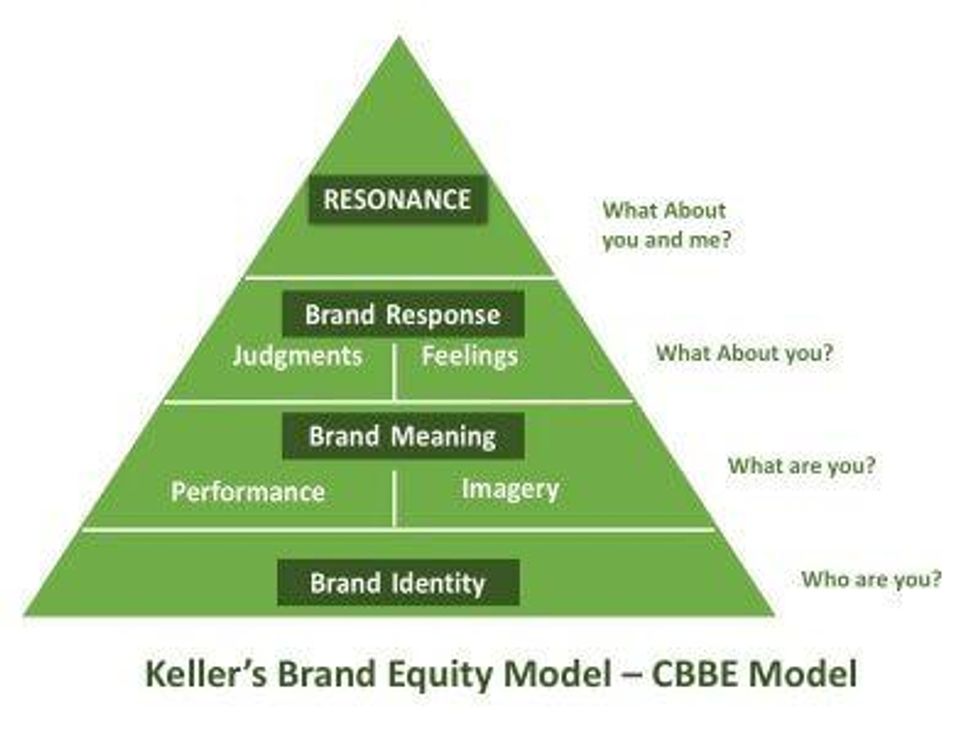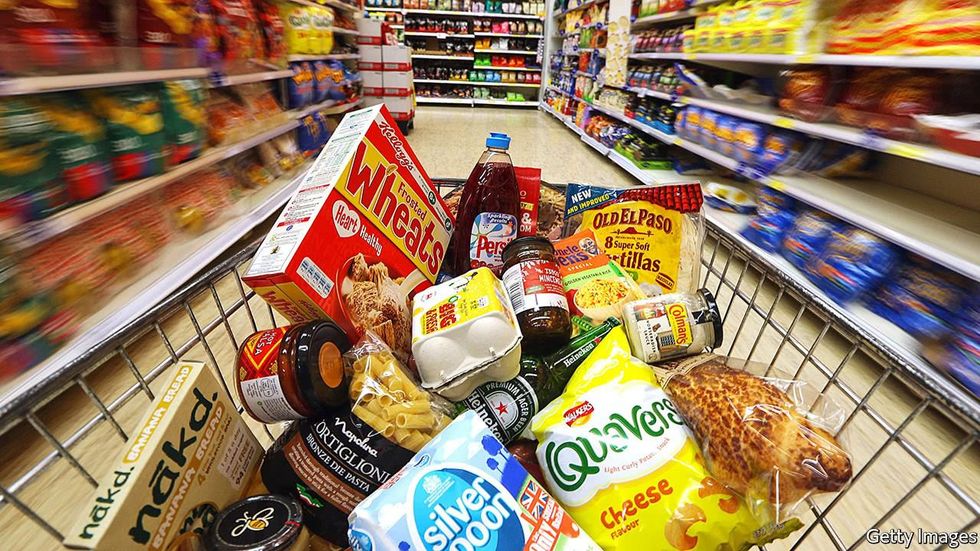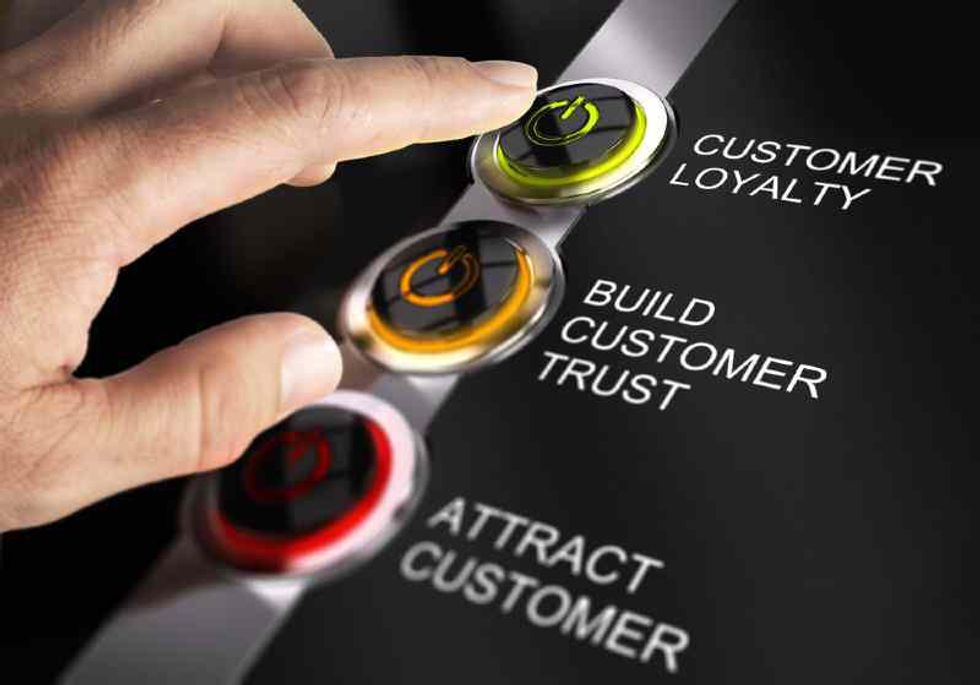The brand pyramid is an outstanding marketing tool that lays the foundation of a strong brand: driving direction, consistency, and what can be done to achieve brand loyalty. Here is a step-by-step process on how to develop a brand pyramid.
Brand Pyramid Overview

The best brand pyramid model (in my humble opinion) is Kevin Keller's (a professor of marketing at Tuck School of Business at Dartmouth College who discussed this model in his 1993 book Strategic Brand Management). You can download the template here.
The brand pyramid is built on four layers: identity, meaning, response, and resonance. Each layer builds upon the next, providing consumers with specific answers about your brand. The first layer, brand identity, answers "Who are you?" Once customers know about your brand, the brand's meaning needs to be understood by asking, "What are you?" in the second layer. Now that customers know who you are and what your brand is, they'll want to know how they feel or think about your brand in the third layer, brand response. At the top of the pyramid is brand resonance, where the goal is to create an emotional bond with customers in order to have a long-lasting relationship with them.
Let's look at each layer in detail.
Brand Identity (Who Are You?)

At the base of the brand pyramid, is brand salience—customers' perception of your brand. At this stage, customers want to know:
- Who are you?
- What makes your brand special? (i.e., your unique selling point (USP template)
When your customers feel that your product or service is right for them, that's the beginning of your relationship. The goal here is to create brand awareness among your audience (check out my podcast where I talk about understanding your target audience, titled "Everyone is Not Your Customer") in order to stand out among your competitors. This is an important level to get right as it supports the rest of the pyramid. If your efforts are ineffective, be sure to change your branding approach.
Brand Meaning (What Are You?)

Now that customers are aware of your brand and know its unique position within the marketplace, it's time to let them know more about your product, delivering quality and reliable performance every time.
There are two building blocks on this level: brand performance and brand imagery.
- Brand Performance: How well does your brand satisfy the needs of your customers? This consists of factors such as:
- Serviceability
- Reliability
- Durability
- Brand Imagery: How does your brand meet customers' psychological or social needs? How do customers perceive your brand? How do they talk about you? Simon Sinek provides a great example here.
Brand Response (What About You?)

What sort of response does your brand evoke from customers? What do they think or how do they feel about your brand? To get answers to these questions, identify your customers' feedback post-purchase. Responses can be categorized as judgments and/or feelings.
Resonance

At the top of the pyramid, it's important to understand the relationship you've built with your customers. The goal is that your brand resonates with customers so much that they keep coming back and become brand advocates. This is the most difficult, yet the most valuable level. The factors you need to consider are:
- Behavior Loyalty: Involves regular, repeat purchases, consumers will buy no other brand
- Attitudes: Loves brand, considers brand superior, brand is a special treat/pleasure
- Engagement: Engaged with brand, even when not making a purchase (i.e., fan club, follow influencers on social media, etc.)
- Community: Feels a sense of community with brand and brand advocates
A good measure for resonance is the Net Promoter Score that asks, "How likely is it that you would recommend (Product X) to a friend or colleague?"
The brand pyramid tells a brand which level the brand is at and what it can do to move up the levels. It guides brands on building their brand equity which has countless benefits. When consumers feel connected to brands, more than half of consumers (57%) will increase their spending with that brand and 76% will buy from them over a competitor. You've got this!




